|

Jabez eZones
Jabez eTutor
Jabez Blue eZone
Jabez Red eZone
Jabez Yellow eZone
Jabez Green eZone
Jabez Brown eZone
Speak Mandarin
Jabez Bible Study
Jabez Future
Jabez
Rapha
My Family Creed
Jabez Jokes
Jabez Sports
Jabez Robots
Jabez overseas
Jabez Fighters
Jabez Nature
| | Jabez
Fighters
 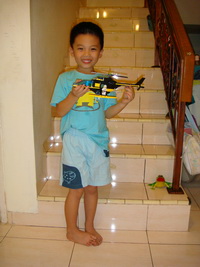 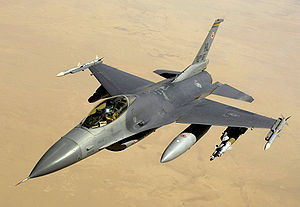
 

|
Jabez
Fighter
Zone
|
|
Lesson 1 |
How planes fly/
aerodynamics
AIRCRAFT DESIGN
Parts of Aeroplane
Aero systems
JET ENGINES
make
your paper planes
aircraft refuelling in the air
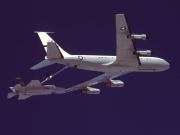
|
|
Lesson 2 |
Top of the Top Fighters
latest
FIGHTERS
LATEST
5TH GENERATION
|
|
Lesson 3 |
BEST FIGHTERS OF WORLD WAR II
BF
109, Spitfire, FW 190, P-51, A6M Zero, P-38, F4U |
|
Lesson 4
|
FighterS INDEX BY YEAR
|
|
Lesson 5 |
FIRST GENERATION
|
|
Lesson 6 |
SECOND GENERATION
|
|
Lesson 7 |
THIRD GENERATION
|
|
Lesson 8 |
FOURTH GENERATION
Fighter Jets By Country
USA/ American
Britain/ British
Germany/German
France/ French
SWEDEN/ SWEDISH
Russia/ Russian
|
|
Lesson 9 |
Airshows
Air Defence
Parachuting
Commercial Aeroplanes
Boeing
Airbus
|
|
Lesson 10 |
ANTI- AIRCRAFT
MIM-104 Patriot
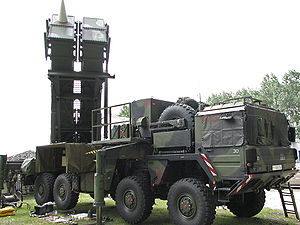
155mm Pegasus Howitzer
 |
|
Lesson 11 |
ADDITIONAL FIGHTERS

STEALTH JETS
BOMBERS
SPY PLANES
Helicopters |
|
Lesson 12 |
SEE THEM IN ACTION
FIGHTERS IN ACTION
ANTI-AIRCRAFT IN ACTION |
|
Lesson 1
How planes fly/ aerodynamics
aircraft refuelling in the air
FROM KC
135
A specially instrumented KC-135
tanker from Edwards Air Force Base,Calif., is deployed to Fort Worth to support
the refueling missions, which will continue over the next two weeks.
On Wednesday's flight, the F-35 program's chief test pilot Jon Beesley climbed
to 20,000 feet and performed a series of maneuvers to verify the F-35’s
compatibility with the KC-135's refueling boom and its aerodynamic wake. The
sortie also evaluated aircraft systems and handling while connected to the
refueling boom. All systems functioned as designed. Beesley reported that the
F-35's flight control system provided excellent handling qualities near the
tanker, and while connected to the tanker refueling boom.
The Lightning II was aloft for one hour and 34 minutes and completed multiple
tanker engagements. “The test team is completely satisfied we can maneuver in
the vicinity of the KC-135, and the tanker boom can easily connect with the
F-35," said Doug Pearson, Lockheed Martin vice president of the F-35 Integrated
Test Force. "We will begin to evaluate the F-35 fuel system during the next
refueling test mission by transferring various amounts of fuel from the tanker."
The F-35 carries a prodigious amount of internal fuel – more than 18,000 pounds
– giving it exceptionally long range without external tanks, and dramatically
reducing its need for tanker support. The internal-fuel configuration enables
the Lightning II to remain stealthy by avoiding external tank carriage typically
used by legacy fighters to extend range. Drop tanks reflect radar energy and can
betray an aircraft’s location. Operating without drop tanks also frees more
stations for external weapons carriage when stealth is not required to fulfill
mission objectives.
"We've known since our first flight in 2006 that the F-35 is extraordinarily
stable and controllable, and we’ve conducted extensive ground testing on the
aerial refueling equipment, so it was no surprise that the tests today went
smoothly," said Dan Crowley, Lockheed Martin executive vice president and F-35
program general manager. The tests are designed to evaluate and confirm the
operation of the aerial refueling system, procedures and aircraft handling
qualities, and are being conducted from Lockheed Martin Aeronautics Co.
headquarters in Fort Worth.

 CLICK
TO GO TO TOP CLICK
TO GO TO TOP

Lesson 2 Top
of the Top Fighters
LATEST
GENERATION
Fifth generation jet
fighters (2005 to the present)
The fifth generation was ushered in by the
Lockheed Martin/Boeing F-22 Raptor in late 2005.
Currently the cutting edge of fighter design,
fifth-generation fighters are characterized by being
designed from the start to operate in a network-centric
combat environment, and to feature extremely low,
all-aspect, multi-spectral signatures employing advanced
materials and shaping techniques. They have
multifunction
AESA radars with
high-bandwidth, low-probability of intercept (LPI)
data transmission capabilities.
IRST sensors are incorporated for air-to-air combat
as well as for air-to-ground weapons delivery. These
sensors, along with advanced
avionics,
glass cockpits, helmet-mounted sights, and improved
secure, jamming-resistant LPI datalinks are highly
integrated to provide multi-platform, multi-sensor
data fusion for vastly improved
situational awareness while easing the pilot's
workload. Avionics suites rely on extensive use of
very high-speed integrated circuit (VHSIC)
technology, common modules, and high-speed
data buses. Overall, the integration of all these
elements is claimed to provide fifth-generation fighters
with a "first-look, first-shot, first-kill capability".
The AESA radar offers unique capabilities for
fighters (and it is also quickly becoming a
sine qua non for Generation 4.5 aircraft
designs, as well as being retrofitted onto some
fourth-generation aircraft). In addition to its inherent
high resistance to ECM and LPI features, it enables the
fighter to function as a sort of "mini-AWACS,"
providing high-gain
electronic support measures (ESM) and
electronic warfare (EW) jamming functions.
Other technologies common to this latest generation
of fighters includes integrated electronic warfare
system (INEWS) technology, integrated communications,
navigation, and identification (CNI) avionics
technology, centralized "vehicle health monitoring"
systems for ease of maintenance,
fiber optics data transmission, and
stealth technology.
Maneuver performance remains important and is
enhanced by thrust-vectoring, which also helps reduce
takeoff and landing distances. Supercruise may or may
not be featured; it permits flight at supersonic speeds
without the use of the afterburner – a device that
significantly increases IR signature when used in full
military power.
A key attribute of fifth-generation fighters is
very-low-observables stealth. Great care has been taken
in intentionally designing its layout and internal
structure to minimize RCS over a broad bandwidth of
detection and tracking radar frequencies; furthermore,
to maintain its VLO signature during combat operations,
primary weapons are carried in internal weapon bays that
are only briefly opened to permit weapon launch.
Furthermore, stealth technology has advanced to the
point where it can be employed without a tradeoff with
compromised aerodynamics performance. In contrast to
previous stealth efforts, significant attention has also
been paid to reducing IR signatures. Detailed
information on these signature-reduction techniques are
classified and thus unavailable, but in general include
special shaping approaches,
thermoset and
thermoplastic materials, extensive structural use of
advanced composites, conformal sensors, heat-resistant
coatings, low-observable wire meshes to cover intake and
cooling vents, and coating internal and external metal
areas with
radar-absorbent materials and paint (RAM/RAP).
The expense of developing such sophisticated aircraft
is as high as their capabilities. The U.S. Air Force had
originally planned to acquire 650 F-22s, but it now
appears that only about 200 will be built. As a result,
its unit flyaway cost (FAC) is reported to be around
$140 million. To spread the development costs – and
production base – more broadly, the
Joint Strike Fighter (JSF) program enrolls eight
other countries as cost- and risk-sharing partners.
Altogether, the nine partner nations anticipate
procuring over 3000
Lockheed Martin F-35 Lightning II fighters at an
anticipated average FAC of $80-85 million. The F-35,
however, is designed to be a family of three aircraft, a
conventional take-off and landing (CTOL) fighter, a
short take-off and vertical landing (STOVL) fighter,
and a carrier-capable fighter, each of which has a
different unit price. Other countries have initiated
fifth-generation fighter development projects, with
Russia's
Sukhoi PAK-FA anticipated to enter service circa
2012–2015. In October 2007, Russia and India signed an
agreement for joint participation in a
Fifth-Generation Fighter Aircraft Program (FGFA),
which will give India responsibility for development of
a two-seat model of the PAK-FA. China is reported to be
pursuing multiple fifth-generation projects under the
western code name;
J-XX, and both Japan and South Korea have proposed
indigenous programs.
 CLICK
TO GO TO TOP CLICK
TO GO TO TOP
In service
In development
 CLICK
TO GO TO TOP CLICK
TO GO TO TOP
Technology demonstrators
 CLICK
TO GO TO TOP CLICK
TO GO TO TOP

Lesson 3
Fighters
REVIEW OF BEST FIGHTERS
OF WORLD WAR II
BF 109,
Spitfire, FW 190, P-51, A6M Zero, P-38, F4U
Messerschmitt Bf 109
The prototype Messerschmitt 109 first flew in 1935. It was a low wing, all
metal monoplane of the type that became the mainstay of all sides in WW II. The
Bf 109 was basically the smallest airframe that Willy Messerschmitt could devise
attached to the most powerful engine available. This proved to be a very
successful formula that could be progressively upgraded.
Supermarine Spitfire
The other "best" fighter of the early period of the European war was the
Spitfire. The Spitfire proved, like the Bf 109, to be a very adaptable airplane,
and in various versions it served throughout the war. Naturally, most of the
famous British aces of WW II flew the Spitfire, including the top scoring
British ace of the war Group Captain "Johnny" Johnson (38 victories), and the
legless ace and hero of the Battle of Britain, Douglas Bader (he flew with two
artificial legs), who scored 9 of his 20 kills from a Spitfire cockpit
Focke-Wulf FW 190
The Focke-Wulf 190 was designed by Kurt Tank, and was a nasty surprise to the
RAF in September 1941. Only a little over 200 were completed in 1941, but in
1942 1,850 were built, which amounted to about 40% of German single seat fighter
production.
The FW 190 was known as a "pilots airplane," meaning she was a sweet ship to
fly, light and easy on the controls (unlike the Bf 109, which was a handful).
Its speed, climb, dive, and roll rate were superior to the Spitfire Mk V. There
was also excellent armor protection for the pilot. It had a wide track landing
gear, which made it much less prone to ground loops than the Bf 109.
North American P-51 Mustang
The other "best" fighter of the later period of the war in Europe was the
North American P-51 Mustang. Many top E.T.O. aces flew the Mustang, including
Captain Don Gentile (35 victories), Captain John Godfrey (31 victories), Colonel
Eagleston (23 victories), Major James Howard the only American ace in both
theaters of the war (6 victories in China flying P-40's, and 6 victories in
Europe flying P-51's), Chuck Yeager (who later became the first man to break the
sound barrier), and Colonel Donald Blakeslee (15 victories) and C.O. of the
famous 4th Fighter Group. The 4th FG destroyed over 1,000 German aircraft, more
than any other American fighter group in WW II.
Mitsubishi A6M Zero
At the beginning of the Pacific War no Allied fighter was a match for the
Zero. The best of the early American Army fighters was probably the Curtiss
P-40, and the early models of this fighter were distinctly inferior to the Zero.
Most of the Imperial Navy's top aces flew the Zero. Prominent among them is
Saburo Sakai (with 64 victories), the top scoring Japanese ace to survive the
war, and Hiroyoshi Nishizawa (actual total of victories unknown, but 104
confirmed), perhaps the greatest of them all. Shoichi Sugita had 120+ victories,
Tadashi Nakajima 75+, and Naoishi Kanno 53.
Lockheed P-38 Lightning
Let's take a look at the P-38 Lightning first. The P-38 shot down more
Japanese aircraft than any other USAAF fighter in WW II. It was flown by both of
the top American aces of the war. Its incredible range became legendary, and its
twin engines particularly suited it for long over water flights.
The P-38 story started in January 1937, when the Army Air Corps issued a
specification for a new pursuit plane for the "interception and attack of
hostile aircraft at high altitude". The government anticipated an order for a
maximum of 50 planes, so suitability for mass production was not a
consideration. Lockheed was one of the companies that entered the competition to
design and build the new fighter.
Chance Vought F4U Corsair
The Chance Vought F4U Corsair is my other "best" Pacific theater
fighter. This big, fast, Navy and Marine fighter was designed in 1938 around the
new Pratt and Whitney R-2800-2 Double Wasp engine, which promised to be the most
powerful in the world at that time. It was a twin row 18 cylinder radial engine
that produced some 1,850 HP in its initial version.
The most distinctive feature of the Corsair is its "cranked" or
inverted gull wing. This feature was designed to raise nose of the airplane
higher off the ground without unduly lengthening the undercarriage. The reason
was to allow the use of the largest possible diameter propeller in order to make
most efficient use of the engine's high power. It also allowed the wing's hinge
point to be a little closer to the ground, and the tips consequently a little
lower when folded, giving a little more hanger deck roof clearance on board
aircraft carriers. The propeller selected was a three-bladed Hamilton-Standard
Hydromatic constant speed model.
century series
macdonnel f-101 voodoo
replublic f-105 thunderchief
convair f-106delta dart
lockheed f-104 Star fighter
north american f 100 Super sabre
convair f-102 delta dagger
 CLICK
TO GO TO TOP CLICK
TO GO TO TOP

Lesson 4
FighterS INDEX BY YEAR
| 1930 - 1940 |
BF-109 Messerschmitt, Hawker Hurricane, A6M Zero, Fokker G.I, JU-87
Stuka, Fokker D.XXI |
| 1940 - 1950 |
Supermarine Spitfire, P-47 Thunderbolt, P-51 Mustang, Mosquito, F-4U
Corsair, P-38J Lightning, F-86 Sabre, P-40 WarHawk, FW-190 Focke Wulf,
Messerschmitt ME-262, F-6F Hellcat, P-80 Shooting Star, B-25 Mitchell,
F-8F Bearcat, Mig-15 Fagot, A1 Skyraider, Macchi M.C.205 Veltro, Gloster
Meteor F Mk.8, B-17 Flying Fortress, de Havilland Vampire, MiG-3, B-29
Superfortress, F4F Wildcat, B-24 Liberator, Me-163 Komet |
| 1950 - 1960 |
MiG-21 Fishbed, F-104 Starfighter, F-8 Crusader, B-52G
Stratofortress, CF-105 Avro Arrow, F-106 Delta Dart, F-84F Thunderstreak,
MiG-17 Fresco, F-105 ThunderChief, F-100 Super Sabre, J-32 Lansen, F-101
VooDoo, B-58 Hustler, MiG-19 Farmer, J-29 Tunnan, Super Mystere B2,
Hawker Hunter, F-102 Delta Dagger |
| 1960 - 1970 |
Buccaneer, F-4 Phantom II, SR-71 Blackbird, A-7D Corsair II, Hawker
Harrier, Mirage F1, A-6 Intruder, U-2 Dragon Lady, J-35 Draken, Avro
Vulcan, A-4 Skyhawk, SU-17/22 Fitter, English Electric / BAC Lightning,
A-5 Vigilante, Mirage III, XB-70 Valkyrie |
| 1970 - 1980 |
F-14 Tomcat, F-15 Eagle, F-5E Tiger II, MiG-27 Flogger, Jaguar GR1,
SU-24 Fencer, MiG-25 Foxbat, A-10 Thunderbolt, F-16 Falcon, Alpha Jet,
SU-25 Frogfoot, Super Etandard, JA37 Viggen, F-21 Kfir, BAe Hawk |
| 1980 - 1990 |
EF111 Raven, F-18 Hornet, Panavia Tornado, Mirage 2000, Mirage 4000,
MiG-29 Fulcrum, SU-27 Flanker, MiG-31 Foxhound, F-117 NightHawk, B-1B
Lancer, F-20 Tigershark, AMX, Tupolev Tu-160 Blackjack |
| 1990 - 2000 |
SU-35 Super Flanker, Yak-141 Freestyle, JAS-39 Gripen, Rafale, B-2
Spirit, YF23, Ching-Kuo Indigenous Defense Fighter (IDF), FA-18E Super
Hornet |
| 2000 - |
F/A-22 Raptor, LCA, EuroFighter 2000 Typhoon, SU-47 (S-37 Berkut),
SU-37 Terminator, MiG/MAPO 1.42 MFI, Aurora, X-35 Joint Strike Fighter
(F-35 Lightning II), Chengdu J-10 |
 FighterS
INDEX BY YEAR FighterS
INDEX BY YEAR
 CLICK
TO GO TO TOP CLICK
TO GO TO TOP

Lesson 5 FIRST
GENERATION JET FIGHTER AIRCRAFT
First generation subsonic jet
fighters (mid-1940s to mid-1950s)
The first generation of jet fighters comprises the initial,
subsonic jet fighter designs introduced late in World War II and
in the early post-war period. They differed little from their
piston-engined counterparts in appearance, and many employed
unswept wings. Initially, guns remained the principal armament.
The main impetus for the development of turbojet-powered was to
obtain a decisive advantage in maximum speed. Top speeds for
fighters rose steadily throughout WWII as more powerful piston
engines were developed, and had begun approaching the transonic
flight regime where the efficiency of piston-driven propellers
drops off considerably.
The first jets were developed during World War II and saw
combat in its final year. Messerschmitt developed the first
operational jet fighter, the
Me 262. It was considerably faster than contemporary
piston-driven aircraft, and in the hands of a competent pilot,
was quite difficult for Allied pilots to defeat. The design was
never deployed in numbers sufficient to stop the Allied air
campaign, and a combination of fuel shortages, pilot losses, and
technical difficulties with the engines kept the number of
sorties low. Nevertheless, the Me 262 indicated the obsolescence
of piston-driven aircraft. Spurred by reports of the German
jets, Britain's
Gloster Meteor entered production soon after and the two
entered service around the same time in 1944. Meteors were
commonly used to intercept the
V-1 "buzz bomb", as they were faster than available piston-engined
fighters. By the end of the war almost all work on
piston-powered fighters had ended. A few designs combining
piston and jet engines for propulsion – such as the
Ryan FR Fireball – saw brief use, but by the end of the
1940s virtually all new combat aircraft were jet-powered.
Despite their advantages, the early jet fighters were far
from perfect, particularly in the opening years of the
generation. Their operational lifespans could be measured
primarily in hours; the engines themselves were fragile and
bulky, and power could be adjusted only slowly. Many squadrons
of piston-engined fighters were retained until the early-to-mid
1950s, even in the air forces of the major powers (though the
types retained were the best of the WWII designs). Innovations
including
ejector seats and all-moving
tailplanes were introduced in this period.
The Americans were one of the first to begin using jet
fighters post-war. The
Lockheed P-80 Shooting Star (soon re-designated F-80) was
less elegant than the swept-wing Me 262, but had a cruise speed
(660 km/h [410 mph]) as high as the combat maximum of many
piston-engined fighters. The British designed several new jets,
including the iconic
de Havilland Vampire which was sold to the air forces of
many nations.
Ironically, the British transferred the technology of the
Rolls-Royce Nene jet engine technology to the Soviets, who
soon put it to use in their advanced
Mikoyan-Gurevich MiG-15 fighters which were the first to
introduce
swept wings in combat, an innovation first proposed by
German research which allowed flying much closer to the speed of
sound than straight-winged designs such as the F-80. Their top
speed of 1,075 km/h (668 mph) proved quite a shock to the
American F-80 pilots who encountered them over
Korea, along with their armanent of two 23 mm cannons and a
single 37 mm cannon compared to machine guns. Nevertheless, in
the first jet-versus-jet dogfight in history, which occurred
during the Korean War on 8 November 1950, an F-80 (as the P-80
had been redesignated) intercepted two North Korean MiG-15s near
the
Yalu River and shot them down.

A de Havilland Sea Vampire Mk.10 taking off from the
Royal Navy aircraft carrier
HMS Ocean on 3 December 1945, the
occasion of the first take-off and landing of a jet
airplane from an
aircraft carrier
The Americans responded by rushing their own swept-wing F-86
squadrons to battle against the MiGs which had similar
trans-sonic performance. The two aircraft had different
strengths, but were similar enough that the superior technology
such as a radar ranging
gunsight and skills and of the veteran
United States Air Force pilots allowed them to prevail.
The world's navies also transitioned to jets during this
period, despite the need for
catapult-launching of the new aircraft. Grumman's
F9F Panther was adopted by the
U.S. Navy as their primary jet fighter in the Korean War
period, and it was one of the first jet fighters to employ an
afterburner. The de Havilland Vampire was the Royal Navy's
first jet fighter. Radar was used on specialized night fighters
such as the
F3D Skyknight which also downed MiGs over Korea, and later
fitted to the
F2H Banshee and swept wing
F7U Cutlass and
F3H Demon as all-weather / night fighers. Early versions of
Infra-red (IR)
air-to-air missiles (AAMs) such as the
AIM-9 Sidewinder and radar guided missiles such as the
AIM-7 Sparrow which would be developed into the 21st century
were first introduced on swept wing subsonic Demon and Cutlass
naval fighters.
 CLICK
TO GO TO TOP CLICK
TO GO TO TOP
Notable first generation jet
fighter aircraft

MD450 Ouragan in the markings of India's No.
47 "Black Archers" Squadron
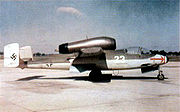
Captured Heinkel He 162 undergoing post-war trials
in the U.S.
 CLICK
TO GO TO TOP CLICK
TO GO TO TOP

Lesson 6 SECOND
GENERATION JET FIGHTER AIRCRAFT
Second generation jet fighters
(mid-1950s to early 1960s)
The development of second-generation fighters was shaped by
significant technological breakthroughs, lessons learned from
the aerial battles of the
Korean War, and a growing focus on conducting operations in
a
nuclear warfare environment. Technological advances in
aerodynamics,
propulsion and aerospace building materials (primarily
aluminium alloys) permitted designers to experiment with a
variety of
aeronautical innovations, such as
swept wings,
delta wings, and
area-ruled fuselages. Widespread use of afterburning
turbojet engines made these the first production aircraft to
break the sound barrier, and the ability to sustain supersonic
speeds in level flight became a common capability amongst
fighters of this generation.
Fighter designs also took advantage of new electronics
technologies that made effective radars small enough to be
carried aboard smaller aircraft. Onboard radars permitted
detection of enemy aircraft beyond visual range, thereby
improving the handoff of targets by longer-ranged ground-based
warning and tracking radars. Similarly, advances in guided
missile development allowed air-to-air missiles to begin
supplementing the gun as the primary offensive weapon for the
first time in fighter history. During this period,
passive-homing
infrared-guided (IR) missiles became commonplace, but early
IR missile sensors had poor sensitivity and a very narrow
field of view (typically no more than 30°), which limited
their effective use to only close-range,
tail-chase engagements. Radar-guided (RF) missiles were
introduced as well, but early examples proved unreliable. These
semi-active radar homing (SARH) missiles could track and
intercept an enemy aircraft "painted" by one's own aircraft's
onboard radar. Medium- and long-range RF air-to-air missiles
promised to open up a new dimension of "beyond-visual-range"
(BVR) combat, and much effort was placed in further development
of this technology.
The prospect of a potential third world war featuring large
mechanized armies and nuclear weapon strikes led to a degree of
specialization along two design approaches:
interceptors (like the
English Electric Lightning and
Mikoyan-Gurevich MiG-21F) and
fighter-bombers (such as the
Republic F-105 Thunderchief and the
Sukhoi Su-7). Dogfighting, per se, was de-emphasized in both
cases. The interceptor was an outgrowth of the vision that
guided missiles would completely replace guns and combat would
take place at beyond visual ranges. As a result, interceptors
were designed with a large missile payload and a powerful radar,
sacrificing agility in favor of high speed, altitude ceiling and
rate of climb. With a primary air defense role, emphasis was
placed on the ability to intercept strategic bombers flying at
high altitudes. Specialized point-defense interceptors often had
limited range and little, if any, ground-attack capabilities.
Fighter-bombers could swing between air superiority and
ground-attack roles, and were often designed for a high-speed,
low-altitude dash to deliver their ordnance.
Television- and IR-guided air-to-surface missiles were
introduced to augment traditional
gravity bombs, and some were also equipped to deliver a
nuclear bomb.
 CLICK
TO GO TO TOP CLICK
TO GO TO TOP
SECOND GENERATION JET FIGHTER AIRCRAFT
 CLICK
TO GO TO TOP CLICK
TO GO TO TOP

Lesson 7 THIRD
GENERATION JET FIGHTER AIRCRAFT
Third generation jet fighters
(early 1960s to circa 1970)
The third generation witnessed continued maturation of
second-generation innovations, but it is most marked by renewed
emphases on maneuverability and traditional ground-attack
capabilities. Over the course of the 1960s, increasing combat
experience with guided missiles demonstrated that combat could
and would devolve into close-in dogfights. Analog
avionics began to be introduced, replacing older
"steam-gauge" cockpit instrumentation. Popular enhancements to
improve the aerodynamic performance of third-generation fighters
included
flight control surfaces such as
canards, powered
slats,
and
blown flaps. A number of technologies would be tried for
Vertical/Short Takeoff and Landing, but
thrust vectoring would be successful on the
Harrier jump jet.
Growth in air combat capability focused on the introduction
of improved air-to-air missiles, radar systems, and other
avionics. While guns remained standard equipment, air-to-air
missiles became the primary weapons for air superiority
fighters, which employed more sophisticated radars and
medium-range RF AAMs to achieve greater "stand-off" ranges,
however, kill probabilities proved unexpectedly low for RF
missiles due to poor reliability and improved
electronic countermeasures (ECM) for spoofing radar seekers.
Infrared-homing AAMs saw their fields of view expand to 45°,
which strengthened their tactical usability. Nevertheless, the
low dogfight
loss-exchange ratios experienced by American fighters in the
skies over Vietnam led the U.S. Navy to establish its famous "TOPGUN"
fighter weapons school, which provided a graduate-level
curriculum to train fleet fighter pilots in advanced Air Combat
Maneuvering (ACM) and
Dissimilar Air Combat Training (DACT) tactics and
techniques.
This era also saw a significant expansion in ground-attack
capabilities, principally in guided missiles, and witnessed the
introduction of the first truly effective avionics for enhanced
ground attack, including
terrain-avoidance systems.
Air-to-surface missiles (ASM) equipped with electro-optical
(E-O) contrast seekers – such as the initial model of the widely
used
AGM-65 Maverick – became standard weapons, and
laser-guided bombs (LGBs) became widespread an effort to
improve precision-attack capabilities. Guidance for such
precision-guided munitions (PGM) was provided by externally
mounted
targeting pods, which were introduced in the mid-1960s.
It also led to the development of new automatic-fire weapons,
primarily
chain-guns that use an electric engine to drive the
mechanism of a cannon; this allowed a single multi-barrel weapon
(such as the
20 mm Vulcan) to be carried and provided greater rates of
fire and accuracy. Powerplant reliability increased and jet
engines became "smokeless" to make it harder to visually sight
aircraft at long distances.
Dedicated ground-attack aircraft (like the
Grumman A-6 Intruder,
SEPECAT Jaguar and
LTV A-7 Corsair II) offered longer range, more sophisticated
night attack systems or lower cost than supersonic fighters.
With
variable-geometry wings, the supersonic
F-111 introduced the
Pratt & Whitney TF30, the first turbofan equipped with
afterburner. The ambitious project sought to create a versatile
common fighter for many roles and services. It would serve well
as an all-weather bomber, but lacked the performance to defeat
other fighters. The McDonnell F-4 Phantom was designed around
radar and missles as
all-weather interceptor, but emerged as a versatile strike
bomber nimble enough to prevail in air combat, adopted by the
U.S. Navy, Air Force and
Marine Corps. Despite numerous shortcomings that would be
not be fully addressed until newer fighters, the Phantom claimed
280 aerial kills, more than any other U.S. fighter over Vietnam.[6].
With range and payload capabilities that rivaled that of WWII
bombers such as
B-24 Liberator, the Phantom would became a highly successful
multirole aircraft.
 CLICK
TO GO TO TOP CLICK
TO GO TO TOP
Notable third generation jet
fighter aircraft
 CLICK
TO GO TO TOP CLICK
TO GO TO TOP

Lesson 8 FOURTH
GENERATION JET FIGHTER AIRCRAFT
Fourth generation jet fighters
(circa 1970 to mid-1990s)
Fourth-generation fighters continued the trend towards
multirole configurations, and equipped with increasingly
sophisticated avionics and weapon systems. Fighter designs were
significantly influenced by the
Energy-Maneuverability (E-M) theory developed by
Colonel John Boyd and mathematician Thomas Christie, based
upon Boyd's combat experience in the Korean War and as a fighter
tactics instructor during the 1960s. E-M theory emphasized the
value of
aircraft specific energy maintenance as an advantage in
fighter combat. Boyd perceived maneuverability as the primary
means of getting "inside" an adversary's decision-making cycle,
a process Boyd called the "OODA
loop" (for "Observation-Orientation-Decision-Action"). This
approach emphasized aircraft designs that were capable of
performing "fast transients" – quick changes in speed, altitude,
and direction – as opposed to relying chiefly on high speed
alone.
E-M characteristics were first applied to the F-15 Eagle, but
Boyd and his supporters believed these performance parameters
called for a small, lightweight aircraft with a larger, higher-lift
wing. The small size would minimize
drag and increase the
thrust-to-weight ratio, while the larger wing would minimize
wing loading; while the reduced wing loading tends to lower
top speed and can cut range, it increases payload capacity and
the range reduction can be compensated for by increased fuel in
the larger wing. The efforts of Boyd's "Fighter
Mafia" would result in
General Dynamics' (now
Lockheed Martin's)
F-16 Fighting Falcon.
The F-16's maneuverability was further enhanced by its being
intentionally designed to be slightly aerodynamically unstable.
This technique, called "relaxed
static stability" (RSS), was made possible by introduction
of the "fly-by-wire" (FBW)
flight control system (FLCS), which in turn was enabled by
advances in computers and system integration techniques. Analog
avionics, required to enable FBW operations, became a
fundamental requirement and began to be replaced by digital
flight control systems in the latter half of the 1980s.
Likewise,
Full
Authority Digital Engine Controls (FADEC) to electronically
manage powerplant performance were introduced with the
Pratt & Whitney F100 turbofan. The F-16's sole reliance on
electronics and wires to relay flight commands, instead of the
usual cables and mechanical linkage controls, earned it the
sobriquet of "the electric jet". Electronic FLCS and FADEC
quickly became essential components of all subsequent fighter
designs.
Other innovative technologies introduced in fourth-generation
fighters include
pulse-Doppler
fire-control radars (providing a "look-down/shoot-down"
capability),
head-up displays (HUD), "hands
on throttle-and-stick" (HOTAS) controls, and
multi-function displays (MFD), all of which have become
essential equipment.
Composite materials in the form of
bonded aluminum honeycomb structural elements and
graphite epoxy
laminate skins began to be incorporated into flight control
surfaces and airframe skins to reduce weight.
Infrared search-and-track (IRST) sensors became widespread
for air-to-ground weapons delivery, and appeared for air-to-air
combat as well. "All-aspect" IR AAM became standard air
superiority weapons, which permitted engagement of enemy
aircraft from any angle (although the field of view remained
relatively limited). The first long-range
active-radar-homing RF AAM entered service with the
AIM-54 Phoenix, which solely equipped the
Grumman F-14 Tomcat, one of the few variable-sweep-wing
fighter designs to enter production.
Another significant revolution came in the form of a stronger
reliance on ease of maintenance, which led to standardisation of
parts, reductions in the numbers of access panels and
lubrication points, and overall parts reduction in more
complicated equipment like the engines. Some early jet fighters
required 50
man-hours of work by a ground crew for every hour the
aircraft was in the air; later models substantially reduced this
to allow faster turn-around times and more sorties in a day.
Some modern military aircraft only require 10 man-hours of work
per hour of flight time, and others are even more efficient.
Aerodynamic innovations included
variable-camber wings and exploitation of the
vortex lift effect to achieve higher
angles of attack through the addition of
leading-edge extension devices such as
strakes.
Unlike interceptors of the previous eras, most
fourth-generation air-superiority fighters were designed to be
agile dogfighters, (although though the
Mikoyan MiG-31 and
Panavia Tornado ADV are notable exceptions). The continually
rising cost of fighters, however, continued to emphasize the
value of multirole fighters. The need for both types of fighters
led to the concept of the "high/low mix" which envisioned a
high-capability – and high-cost – core of dedicated
air-superiority fighters (like the F-15 and
Sukhoi Su-27) supplemented by a much larger contingent of
lower-cost multirole fighters (such as the F-16 and
Mikoyan MiG-29).
Most fourth-generation fighter-bombers, such as the
Boeing F/A-18 Hornet and
Dassault Mirage 2000, are true multirole warplanes, designed
as such from the start. This was facilitated by multimode
avionics which could switch seamlessly between air and ground
modes. The earlier approaches of adding on strike capabilities
or designing separate models specialized for different roles
generally became passé (with the
Panavia Tornado being an exception in this regard).
Dedicated attack roles were generally assigned either to
interdiction strike aircraft such as the
Sukhoi Su-24 and
Boeing F-15E Strike Eagle or to armored "tank-plinking"
close air support (CAS) specialists like the
Fairchild-Republic A-10 Thunderbolt II and
Sukhoi Su-25.
Perhaps the most novel technology to be introduced for combat
aircraft was "stealth",
which involves the use of special "low-observable" (L-O)
materials and design techniques to reduce the susceptibility of
an aircraft to detection by the enemy's sensor systems,
particularly radars. The first
stealth aircraft to be introduced were the
Lockheed F-117 Nighthawk attack aircraft (introduced in
1983) and the
Northrop Grumman B-2 Spirit bomber (which first flew in
1989). Although no stealthy fighters per se appeared amongst the
fourth generation, some radar-absorbent coatings and other L-O
treatments developed for these programs are reported to have
been subsequently applied to fourth-generation fighters.
 CLICK
TO GO TO TOP CLICK
TO GO TO TOP
Notable fourth generation jet
fighter aircraft
 CLICK
TO GO TO TOP CLICK
TO GO TO TOP

Lesson 9
Airshows
edward air force base airshow
journal 2003
Air Defence
Parachuting
Commercial Aeroplanes
Boeing
Airbus
 CLICK
TO GO TO TOP CLICK
TO GO TO TOP

Lesson 10
ANTI-
AIRCRAFT

The name "Patriot" is a
backronym of Phased Array Tracking Radar
Intercept on Target.
A more fanciful acronym was Protection Against Threats,
Real, Imagined, Or Theorized
(Also, Pointing At Targets, Real, Imagined, Or Theorized.)
The symbol for Patriot is a drawing of a
Revolutionary War-era
Minuteman.
155mm Pegasus Howitzer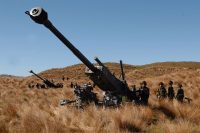
The
155mm/39-cal Singapore Light Weight Howitzer (SLWH)
Pegasus
was commissioned by Minister for Defence Teo Chee Hean
on Oct 28, 2005 [fact
sheet |
video]. Its combination of 155mm firepower, powered
mobility, and single-helicopter portability makes it an
unusual offering on the global stage. Weighing 5.4 tons, the
Pegasus offers better range and firepower than the aging 60
Giat 105mm LG1 towed light howitzers it will replace. During
operations, the Pegasus will provide long-range,
maneuverable fire support to the Army’s heliborne forces.
Singaporean defense industry is known for its
hand-in-glove work with the Singaporean government, smart
diversification of its industrial base, and innovative
combinations of new and tested technologies to produce very
fine equipment that precisely meets Singapore’s needs. The
Pegasus is another example of these trends, and its
performance characteristics are indeed well suited to its
mission.
In addition to being air-transportable by the Air Force’s
CH-47D “Chinook” helicopters, the SLWH Pegasus includes an
APU (Auxillary Power Unit, really an independent engine)
which provides the gun with a short-range self-propelled
capability over terrain at up to 12 km/h. This mobility will
be used as a supplement that gives the guns some “shoot and
move” capabilities, enabling multiple-volley survival
against enemies with fire-finder tracking radars linked with
modern artillery and/or rockets. It is not intended for
long-range transport, which requires towing by a truck – or
more likely, Singapore’s
BAE Hagglunds Bv-206 or indigenous
ATTC
Bronco variant all-terrain light armored vehicles. As
such, the SLWH Pegasus is more of a useful hybrid than a
true self-propelled howitzer.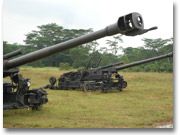
The Pegasus’ gun can achieve a burst rate firing of 3
rounds in 24 seconds, with an automatic loading system that
can help sustain that rate for longer periods. The system
also includes an advanced mechanical sight and overall frame
that can withstand firing shocks of up to 90G, thanks to the
use of lightweight titanium and aluminum (similar to the 4.1
ton, 155mm/39-cal US/British
M777A1 howitzer) and innovative recoil management. The
SAF’s artillery systems will all be standardized at 155mm
after the Pegasus is fully phased into the SAF’s artillery
units, improving logistical efficiency and overall striking
power.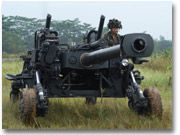
This project leveraged Singapore’s recent development of
a range of domestically produced 155mm munitions. It also
marks another milestone in the close partnership among the
Armed Forces, its Defence Science & Technology Agency (DSTA)
procurement agency, and ST Kinetics. They had previously
collaborated on artillery projects such as the tracked 28.3
ton 155mm/39-cal Singapore Self-Propelled Howitzer 1 (SSPH1
Primus |
Fact sheet), the 155mm/52-cal towed Field Howitzer 2000
(FH2000),
and the 155mm Field Howitzer 88 (FH88).
READ MORE ON THE HOWITZER SPECS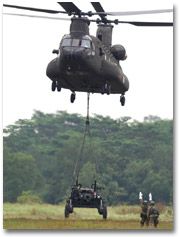
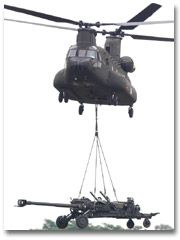 SEE MORE PICS OF THE HOWITZER SEE MORE PICS OF THE HOWITZER
|
|
 CLICK
TO GO TO TOP CLICK
TO GO TO TOP

Lesson 11
additional FIGHTERS
The E-2A Hawkeye was designed with one primary mission in mind: patrolling
the approaches to the fleet to detect impending attack by hostile aircraft,
missiles or sea forces. In addition to this AEW function, the E-2A provided
strike and traffic control, area surveillance, search and rescue guidance,
navigational assistance and communications relay services.
Capable of all-weather carrier operations, the Hawkeye has great flexibility
in assignments owing to its sophisticated electronics equipment. Its Airborne
Tactical Data System (ATDS), consisting of an auto-detection radar, airborne
computers, and a memory and data link system, is tied to the Naval Tactical Data
System (NTDS), located at fleet headquarters, which gives an overall picture of
the tactical situation.
One interesting feature of the E-2 is its 24-foot revolving radar dish. The
dish rotates at six rpm and can be retracted two feet to facilitate stowage
aboard a carrier. The lift produced by the radar dish when the plane is in
flight is sufficient to offset its own weight.
The first Hawkeyes went to sea aboard USS Kitty Hawk (CVA 63) with
VAW-11 in 1966. Since that time, they have become a regular part of the fleet's
defensive and offensive forces.
The five-man crew consists of two pilots and three equipment operators. They
can monitor a large number of aircraft at any given time, directing strike
aircraft to assigned targets, in fair weather or foul, while maintaining a watch
for hostile forces within the long range of their radar. Working as a team, the
Hawkeyes surround the fleet with an early warning ring capable of directing air
defenses against any enemy.
The E-2 Hawkeye has been improved since the first E-2A flew in 1961.
Follow-on models include the E-2B and E-2C with advanced radar, improved
computer systems, and expanded surveillance and command control capability.
The current model operating in the Fleet, the E-2C, is equipped with radar
capable of detecting targets anywhere within a three-million-cubic-mile
surveillance envelope while simultaneously monitoring maritime traffic. Each
E-2C also can maintain all-weather patrols, track, automatically and
simultaneously, more than 600 targets, and control more than 40 airborne
intercepts.
During the late 1980s and early 1990s the E-2C Hawkeye has supported
numerous naval engagements, including the 1985 intercept of the aircraft
containing the hijackers of the liner Achille Lauro; the strikes against Libya
in 1986; and the Persian Gulf War.
Through carefully planned upgrades, the sensors, communications and avionics
systems have kept pace with increasing tactical requirements. The latest update,
Group II, coupled with a new mission computer presently under development, will
take the Hawkeye well into the next century.
The E-2C Hawkeye is the U.S. Navy's all-weather, carrier-based tactical airborne
warning and control system platform. It provides all-weather airborne early
warning and command and control functions for the carrier battle group.
Additional missions include surface surveillance coordination, strike and
interceptor control, search and rescue guidance and communications relay.
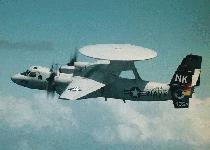 An integral component of the carrier air wing, the E-2C carries three primary
sensors: radar, IFF, and a passive detection system. These sensors are
integrated through a general purpose computer that enables the E-2C to provide
early warning, threat analyses, and control of counter action against air and
surface targets. The E-2C incorporates the latest solid state electronics. An integral component of the carrier air wing, the E-2C carries three primary
sensors: radar, IFF, and a passive detection system. These sensors are
integrated through a general purpose computer that enables the E-2C to provide
early warning, threat analyses, and control of counter action against air and
surface targets. The E-2C incorporates the latest solid state electronics.
Carrier-based E-2C Hawkeye airborne early warning aircraft directed F-14 Tomcat
fighters that provided combat air patrol during the two-carrier battle group
joint strike against terrorist-related Libyan targets in 1986, and during the
crisis period preceeding and following the strike. E-2Cs and AEGIS cruisers,
working together, provided total air mass superiority over the American fleet.
During this time, American aircraft made 153 intercepts of Libyan air force
attempts to overfly the U.S. fleet, intercept the U.S. fighter combat air
patrol, or gather intelligence information. Not once did a Libyan aircraft get
into firing position before it was locked into the sights of a U.S. aircraft or
AEGIS platform missile.
There currently is one squadron of four Hawkeyes in each carrier air wing (CVW).
E-2 aircraft also have worked extremely effectively with U.S. law enforcement
agencies in drug interdiction operations. The E-2C replaces the E-2B, an earlier
version. E-2C aircraft entered U.S. Navy service with Airborne Early Warning
Squadron 123 (VAW-123) at NAS Norfolk, Va., in November 1973. Procurement of
E-2Cs by the Navy is planned at six per year for FY 1988-98.
The E-2C+ upgrade includes radar improvements, software upgrades, and more
powerful engines. Further plans include upgrading the whole E-2 fleet to Block I
and II status, which mean a new radar (APS-139 and APS-145, respectively) and
overall improved processing capability.
On 26 April 1999 Northrop Grumman was awarded a $1,305,400,000 multiyear
advanced acquisition contract for the procurement of 21 airborne early warning
E-2C aircraft in the Hawkeye 2000 configuration for the US Navy, and long lead
material for one aircraft for the government of France under the Foreign
Military Sales Program. Work will be performed in St. Augustine, Fla. (80%), and
Bethpage, N.Y. (20%), and is expected to be completed by July 2006.
Taiwan received four E-2T [for Taiwan] Hawkeyes as of September 1995 as part
of a $749.5 million deal with US firm Northrop Grumman. In conjunction with F-16
and Mirage 2000 fighters, the E-2Ts will enhance Taiwan's air defence
capability, increasing attack warning times from five minutes to 25 minutes.
 LEARN MORE ABOUT
HAWKEYE LEARN MORE ABOUT
HAWKEYE
BOMBERS, STEALTH, SpYPLANES
HELICOPTERS
BOMBERS
STEALTH
Hopeless diamond
have blue
F-117 nighthawk
Norththrop YF-23
F22-raptor
SpY PLANES
F-104
Helicopters
|
 CLICK
TO GO TO TOP CLICK
TO GO TO TOP

Lesson 12
FIGHTERS IN ACTION
FIGHTERS IN
ACTION
u-tubes
MIRAGE 2000 IN FLIGHT
RAPTOR F 22
anti
aircraft in action
u-tubes
FH
2000 52 Calibre 155mm Field Howitzer
WHEELED HOWITZER - ATMOS |










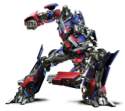










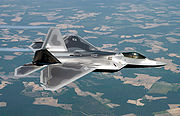
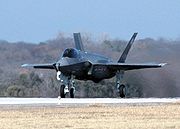






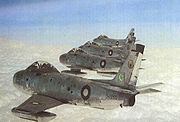

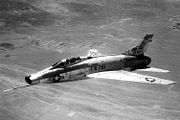
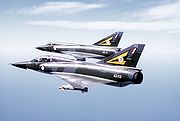

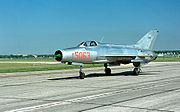
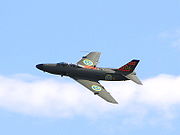
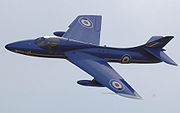
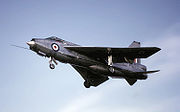



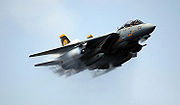
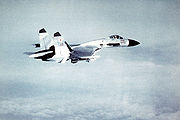
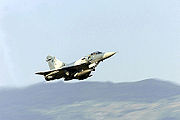
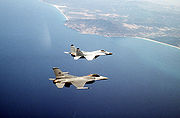
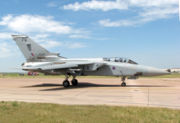
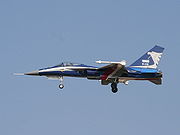



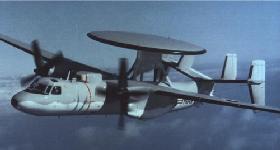
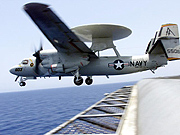
 An integral component of the carrier air wing, the E-2C carries three primary
sensors: radar, IFF, and a passive detection system. These sensors are
integrated through a general purpose computer that enables the E-2C to provide
early warning, threat analyses, and control of counter action against air and
surface targets. The E-2C incorporates the latest solid state electronics.
An integral component of the carrier air wing, the E-2C carries three primary
sensors: radar, IFF, and a passive detection system. These sensors are
integrated through a general purpose computer that enables the E-2C to provide
early warning, threat analyses, and control of counter action against air and
surface targets. The E-2C incorporates the latest solid state electronics.